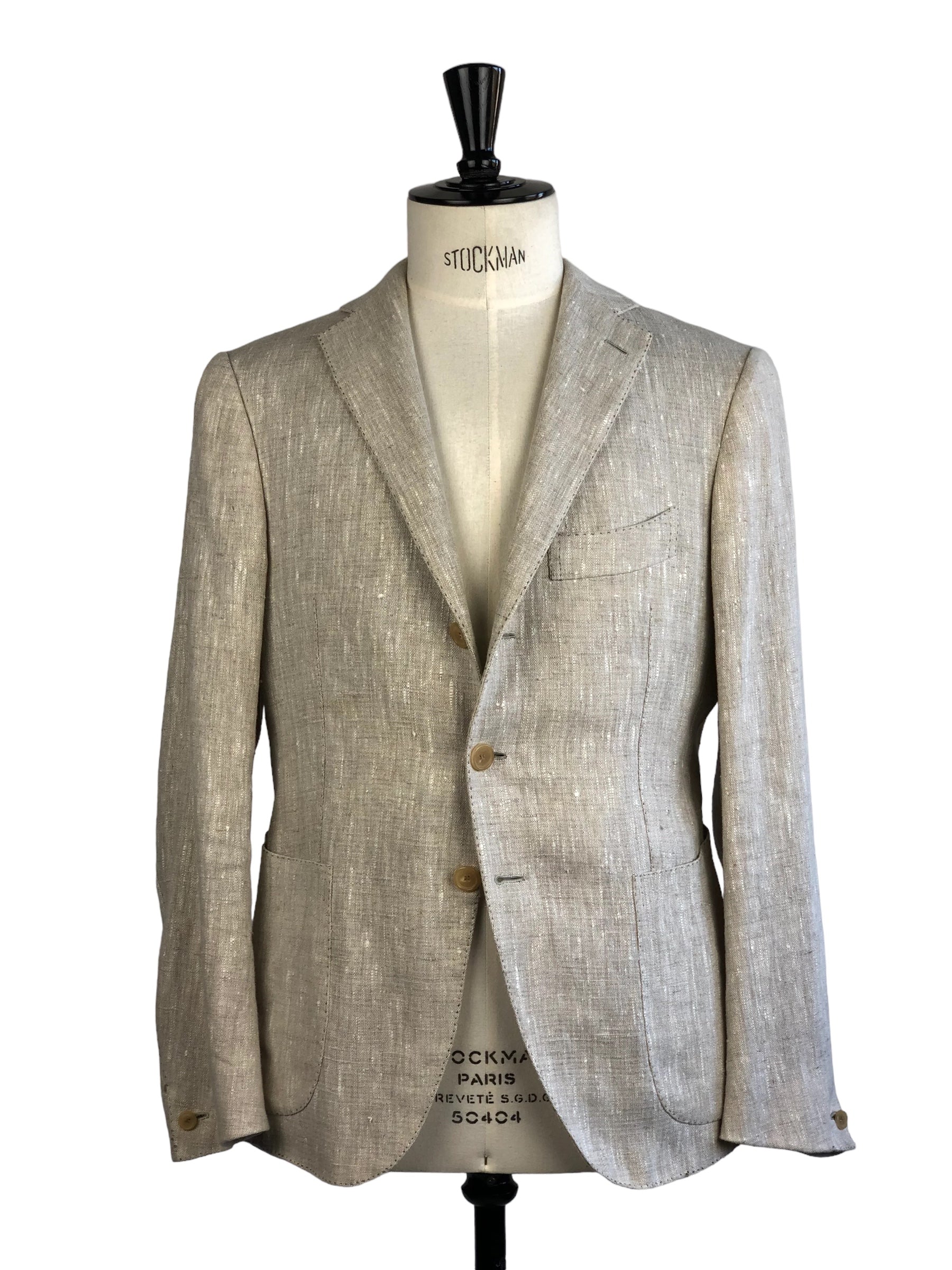

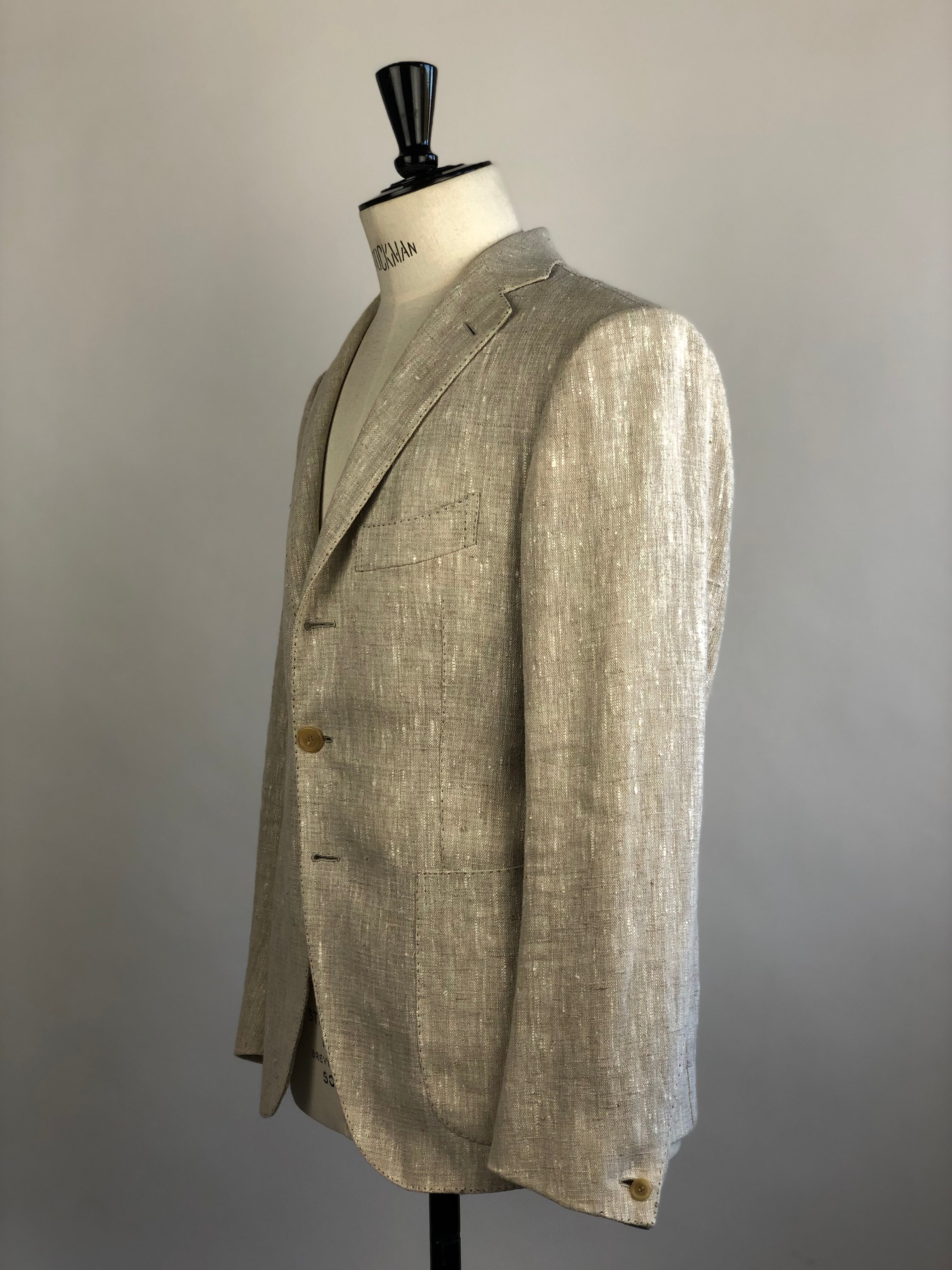
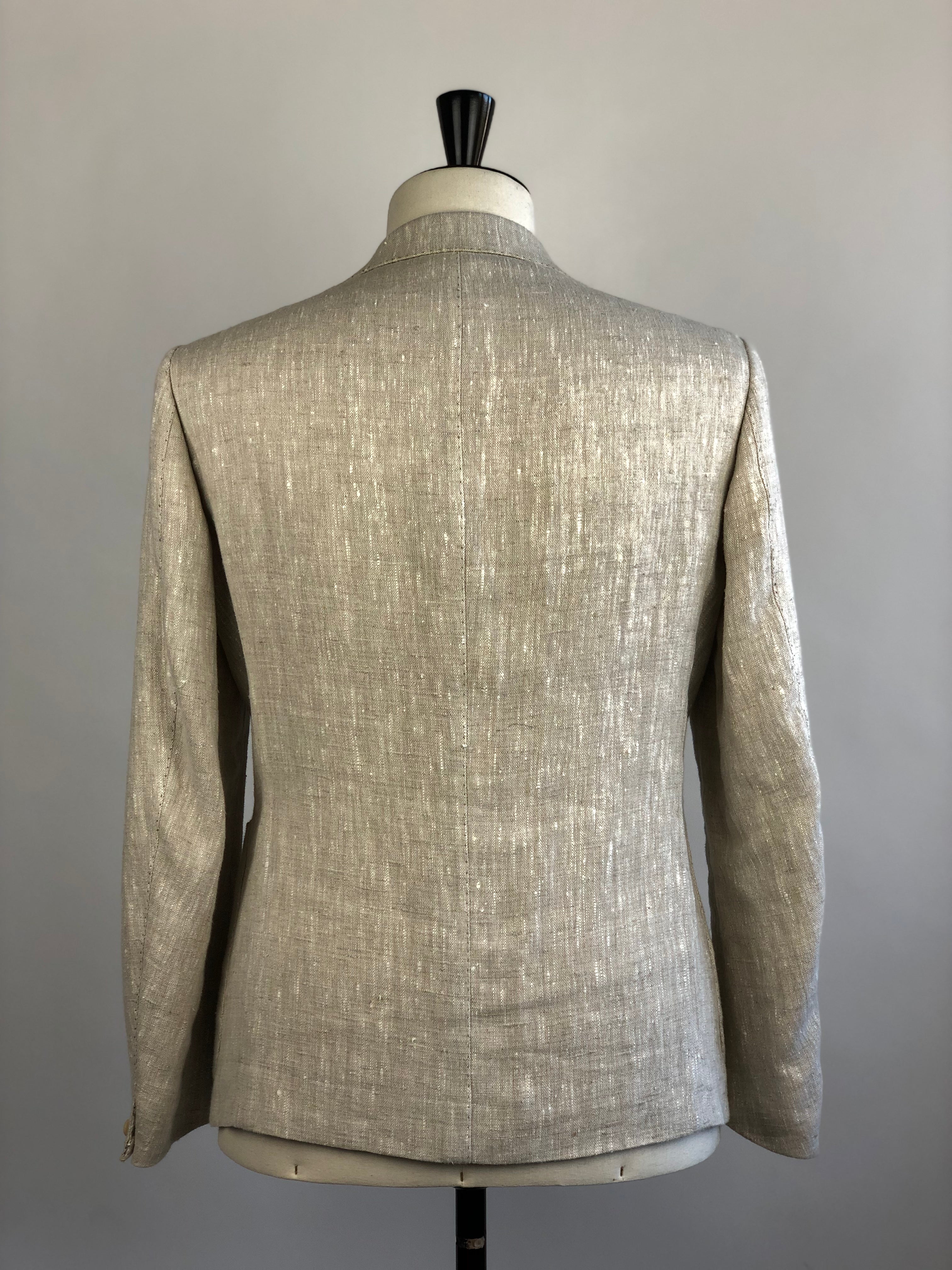

Cesare Attolini Linen Jacket
50 IT / 40 US / Large
Unconstructed Neapolitan jacket crafted from beige bouclé linen, with notch lapels, patch pockets and single button and buttonhole at the end of the sleeve. The shorter back and sleeves are a quintessential Neapolitan detail. Discover the elaborated sartorial details below.
Each Cesare Attolini garment is made entirely by hand in the Casalnuovo tailor’s shop, on the outskirts of Naples. It takes 25 to 30 hours to make a suit. 130 tailors work every day, each dedicated to performing a single step. Absolute perfectionism. What makes each Cesare Attolini jacket unique are those little handcrafted details fine-tuned over the decades by Vincenzo Attolini, needless to say, designer and creator of the first unstructured Neapolitan-style jacket, and perfected by his son Cesare.
Composition: 100% Linen
Color: Beige
Pattern: Bouclé
See how we measure our sartorial items
Discover the customization possibilities by visiting our tailor alteration guide
Shipping
- Complimentary shipping on orders over €200 (Netherlands), €500 (EU), and €1,000 (rest of world).
- Orders under these amounts: shipping rates depend on your country.
- Customs duties or import fees may apply and are the customer’s responsibility. The courier may charge additional fees.
Returns
- You have the right to return your order within 14 days of delivery.
- If you wish to return an item, please notify us within 48 hours of receiving your order.
- Return shipping is at the customer’s expense.
- A 10% restocking fee will be deducted from your refund for all returns.
Please carefully review all measurements and quality control notes in the listing before purchasing. Return shipments have an environmental and economic impact. For any questions or if you need help, feel free to contact us before placing your order.
General Note: While we inspect each item to ensure its quality, please note that minor imperfections may be present due to the preloved nature of the garments. We strive to represent every item accurately, but subtle signs of wear may sometimes go unnoticed. We appreciate your understanding and commitment to sustainable luxury.
Choose options





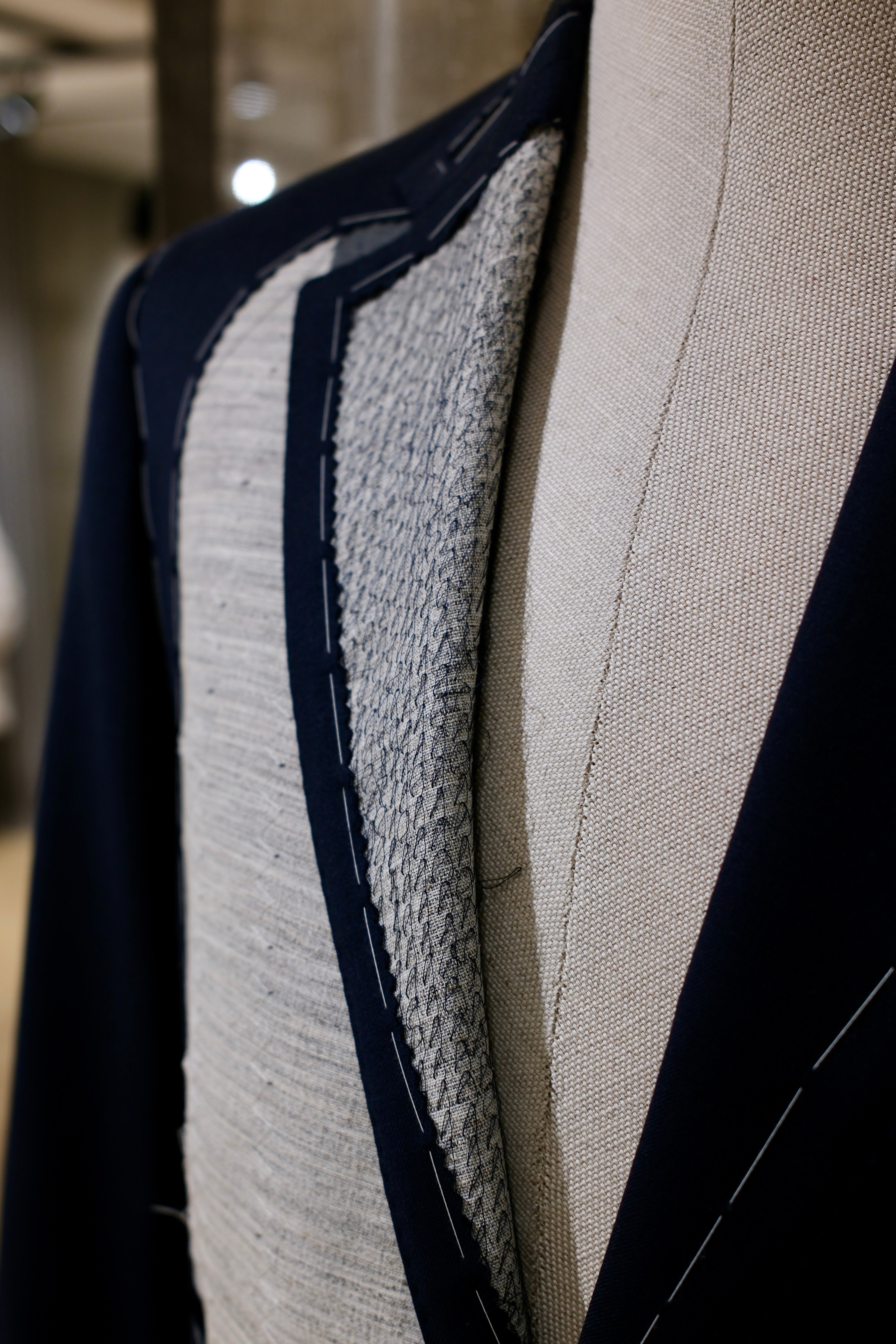
Discover the
Sartorial Details

Full Canvas Construction
A sartorial jacket - or coat - needs an interlining that will help give it shape and mold it. Canvas gives the item a tailored and crafted look. In short, it breathes life into it. Purely technical, canvas is made from either horsehair, wool, mohair or camel hair. It could also be a mix of them all, with varying thickness and weight. The canvas is stitched to the jacket, often by hand, thus making the canvas pieces 'floating' in the middle of the inner and outer cloth. This gives the jacket added flexibility. The canvas runs from the upper parts, all the way down to the end of the jacket. After you wear your canvassed suit for a while, it will begin to take your shape and look incredibly natural.
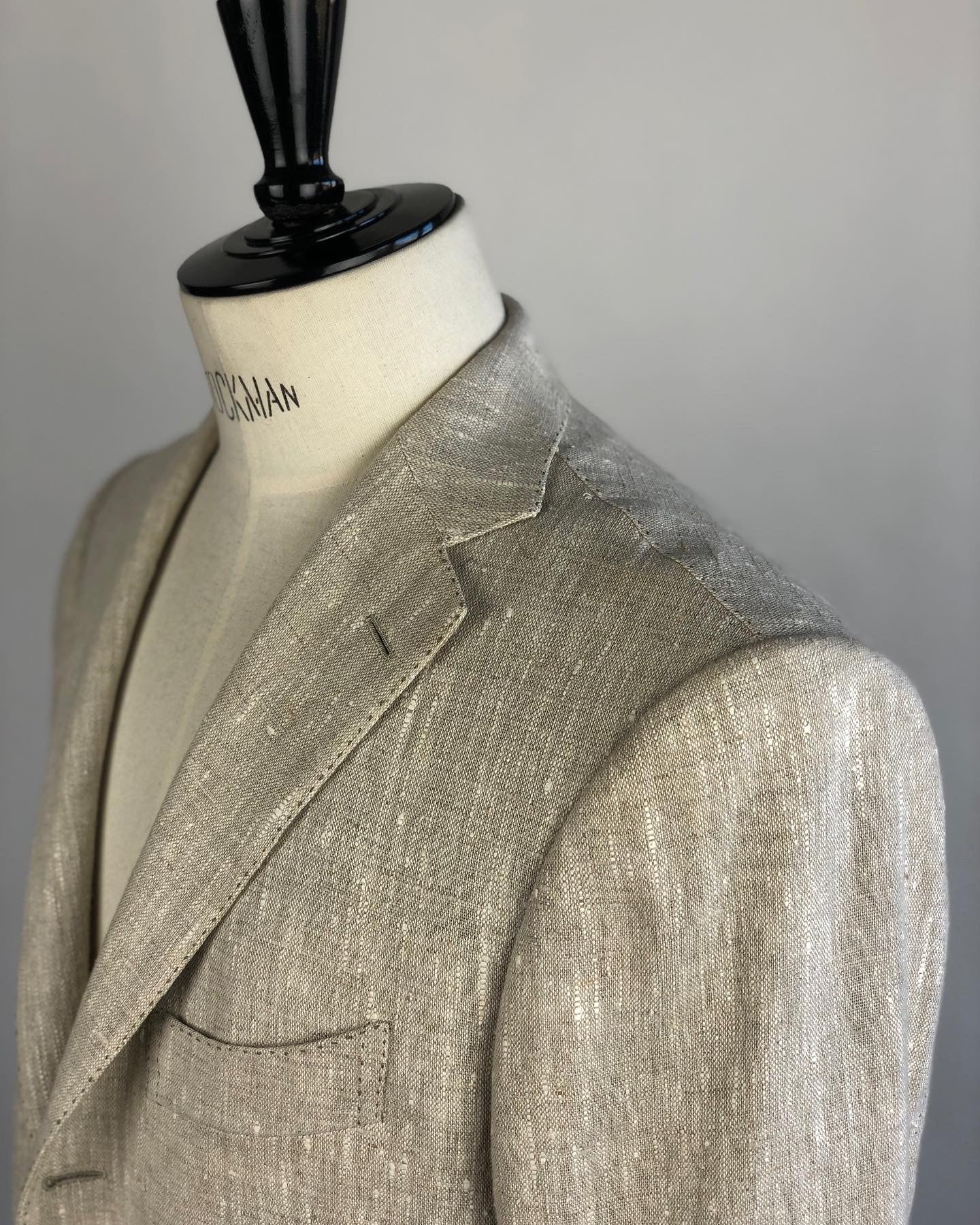
La Spalla Camicia
Spalla Camicia roughly translates to 'shirt sleeve' in Italian and is a shoulder style created and popularized by Neapolitan tailors. The name 'shirt sleeve' was so coined due to the characteristic shirring found at the sleeve's head where the fullness of the larger sleeve collapses. Rather than having the head of the sleeve turned back and stitched inside, the head is lapped under and stitched along the top.
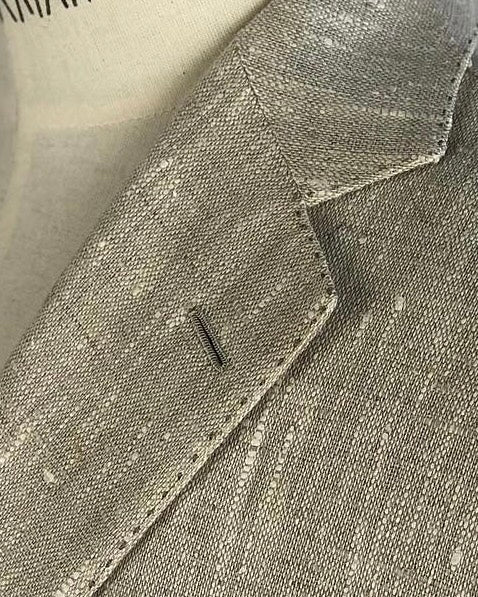
Neapolitan Buttonhole
The buttonhole preferred by tailors in Naples, Italy. The Neapolitan is a slightly shorter and thicker style of handmade buttonhole. It has a distinct opening at the end, which opens wider than any other buttonhole.
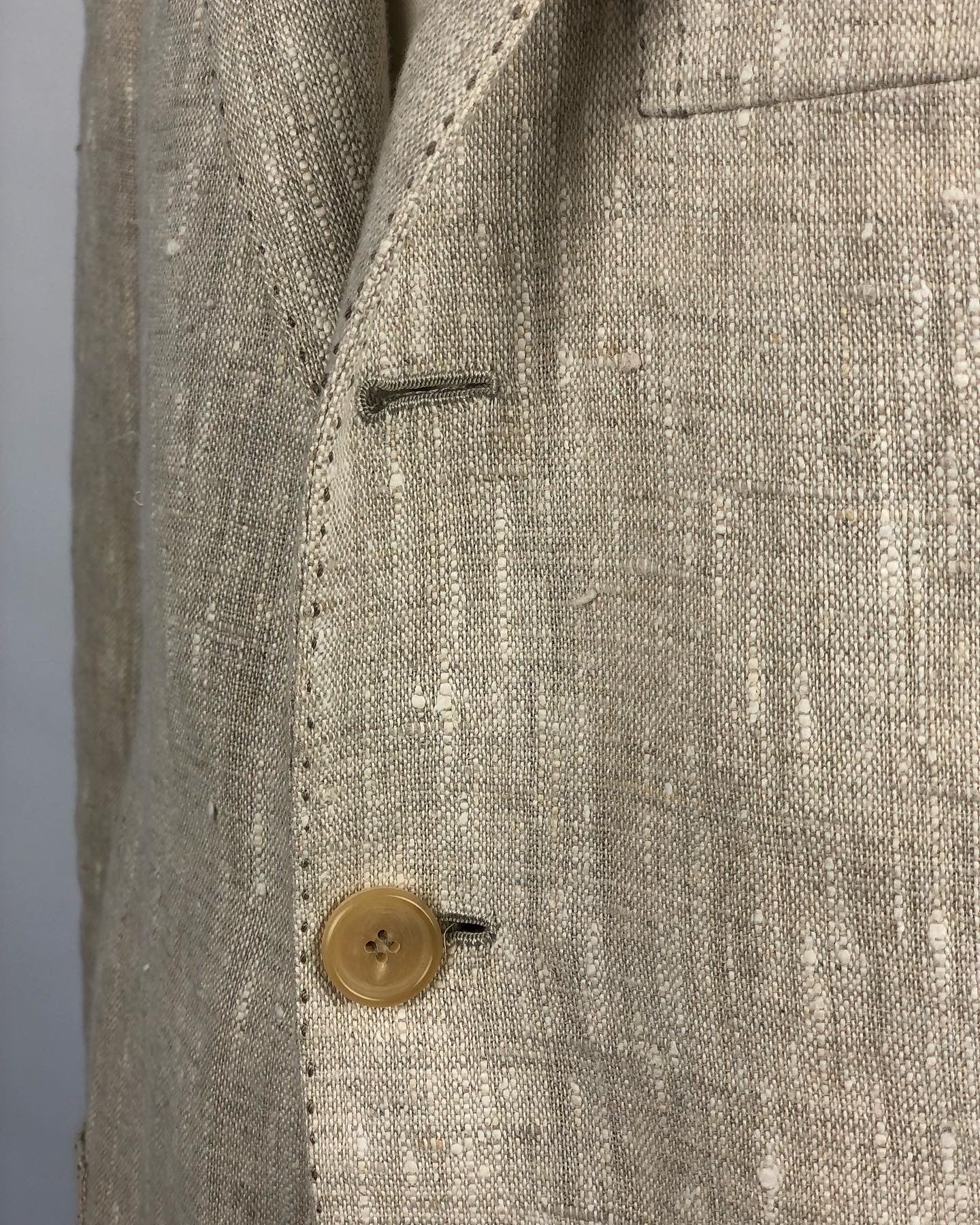
2.5 Button Closure
The ‘tre bottoni stirato a due’, also known as the three rolling on two lapel style, is perhaps the most infamous characteristic of the Neapolitan style jacket. The top button and buttonhole are ornamental, so are left unbuttoned. As the lapel rolls down it elegantly folds over the top button and stops just 4 cm above the second button creating the distinct roll of the lapel the style is known for. As it is intended to remain unbuttoned, the top buttonhole is actually made inside out so the beautiful side will still be visible.
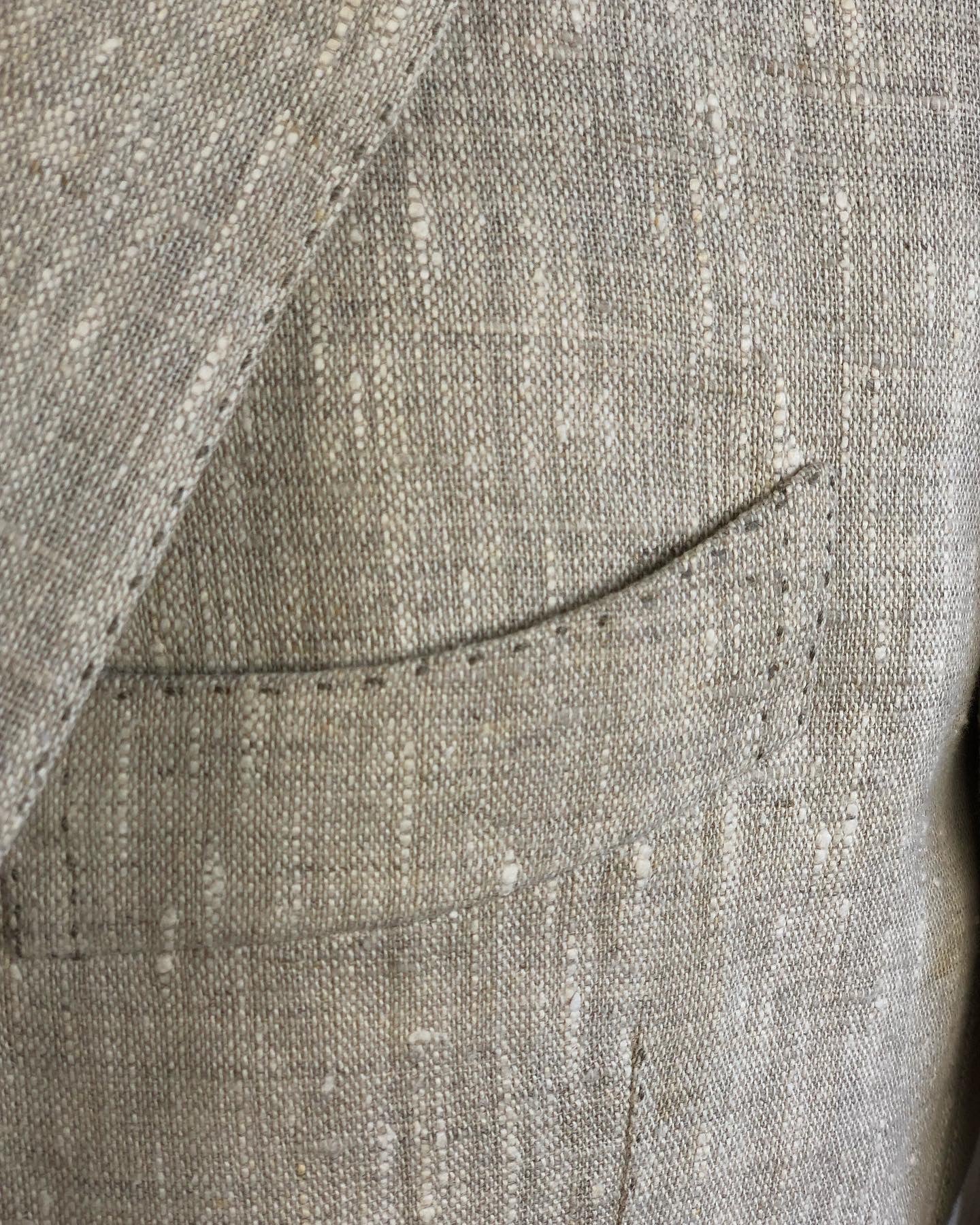
Barchetta Chest Pocket
The barchetta pocket is often thought to be a tailoring detail exclusively from Italy. The word “barchetta” is Italian for “little boat.” It describes how the pocket floats on the chest, gently angled upwards, like the bow of a sailboat.
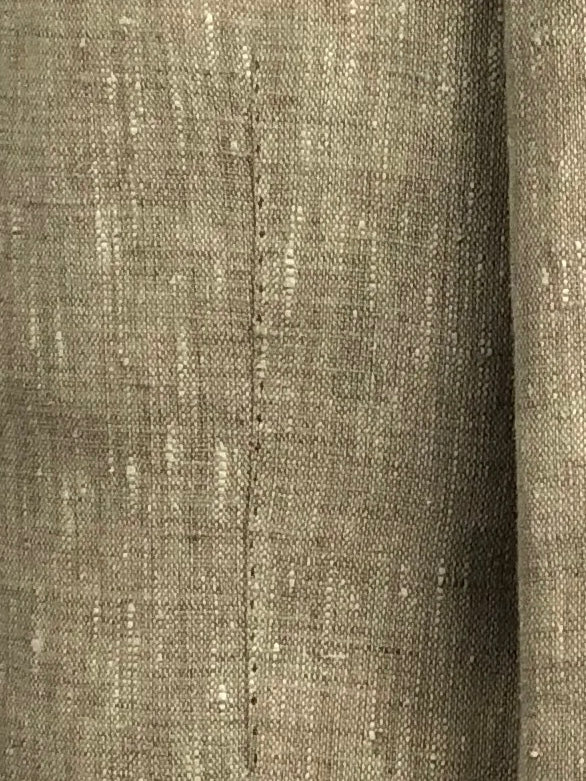
Neapolitan Darts
Neapolitan master tailors add two darts - think of them as pinched seams - to ensure the jacket’s body achieves a slim silhouette. The process, called mezzo punto riprese, is done entirely by hand.
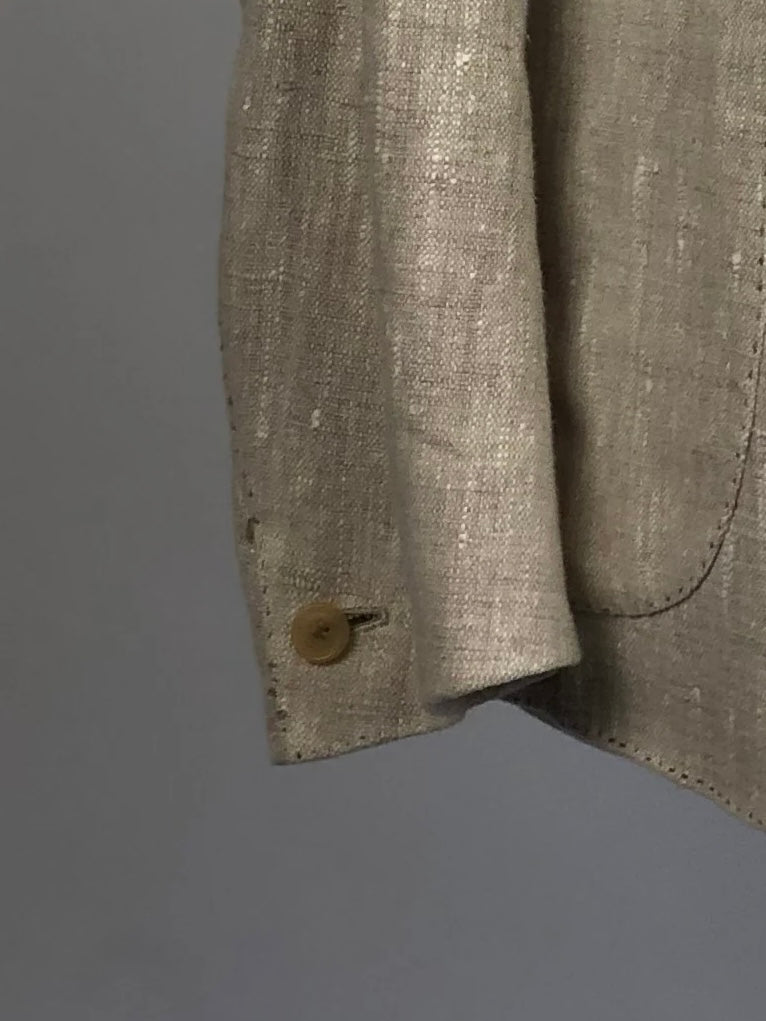
Horn Buttons
Horn buttons are prized for their quality. They are made with the finest genuine horn material, improving the appearance of the suit. And because they are so strong, you don't have to worry about them cracking or breaking.
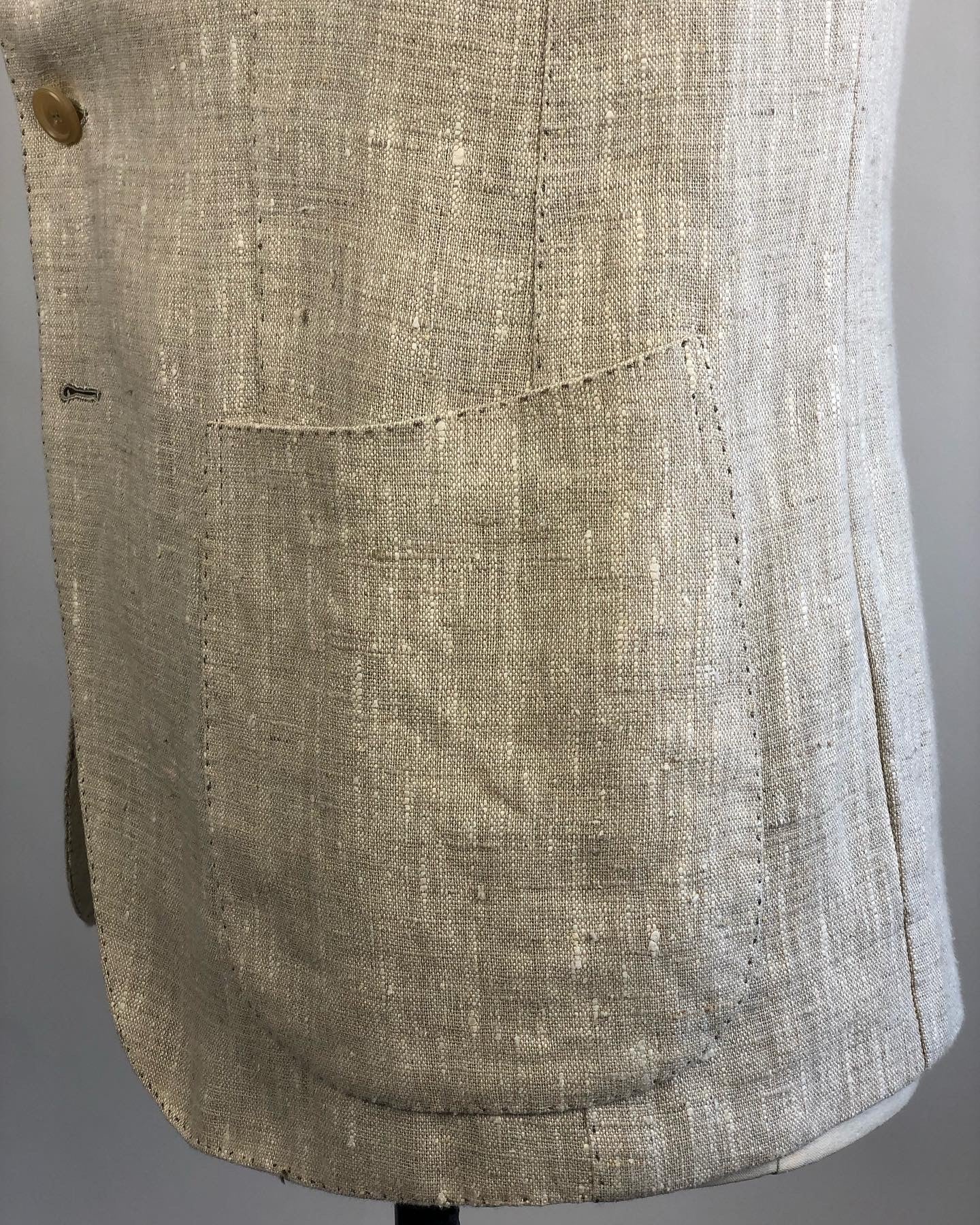
Tasca a Pignata Patch Pocket
Patch pockets, with their rugged functionality, were unsurprisingly adopted by the military for both shirts and jackets. The lower patch pockets on a Neapolitan jacket are modeled after the tasca a pignata style, and when done in its purest form, are easily recognizable with a rounded-bottom and a unique shape
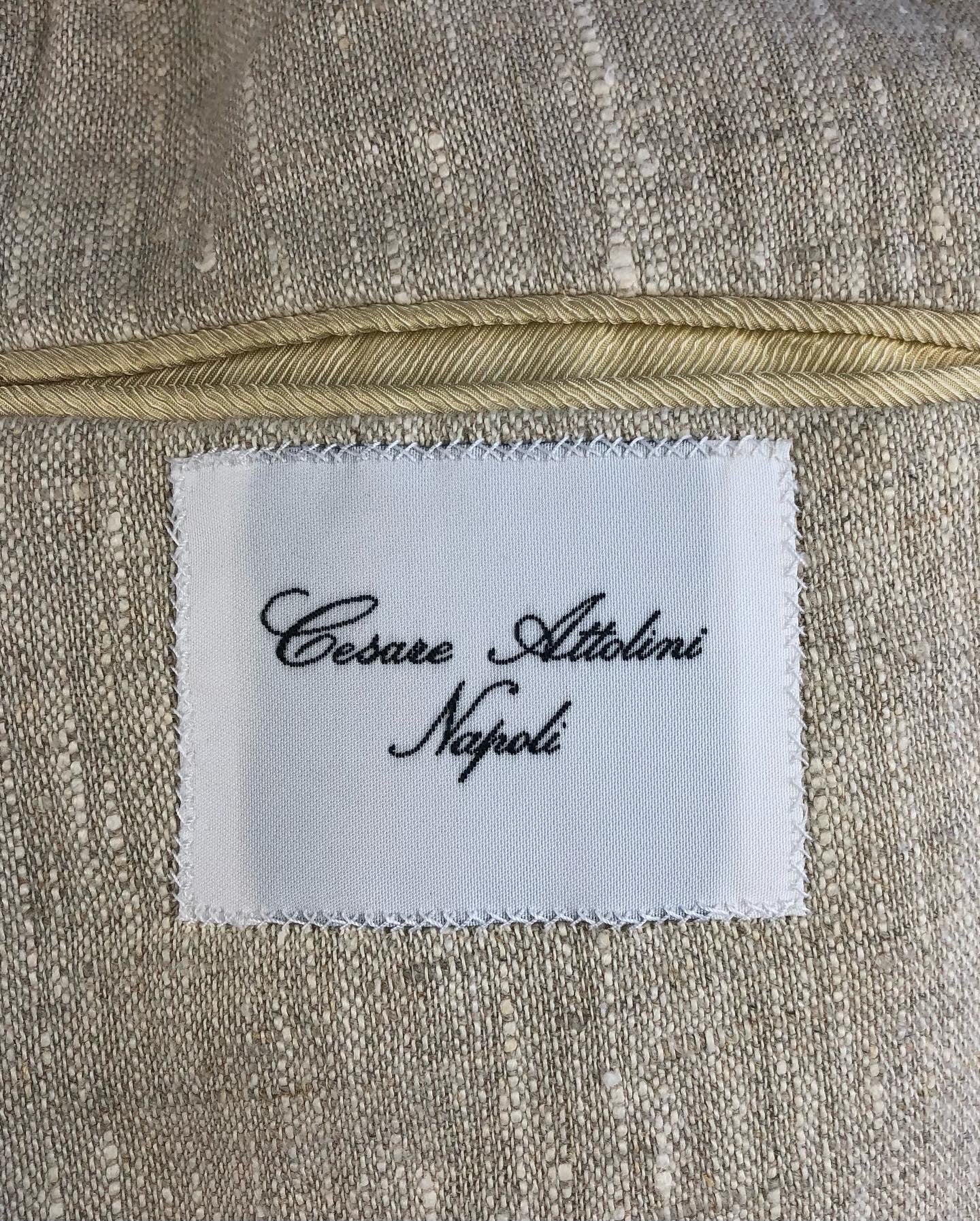
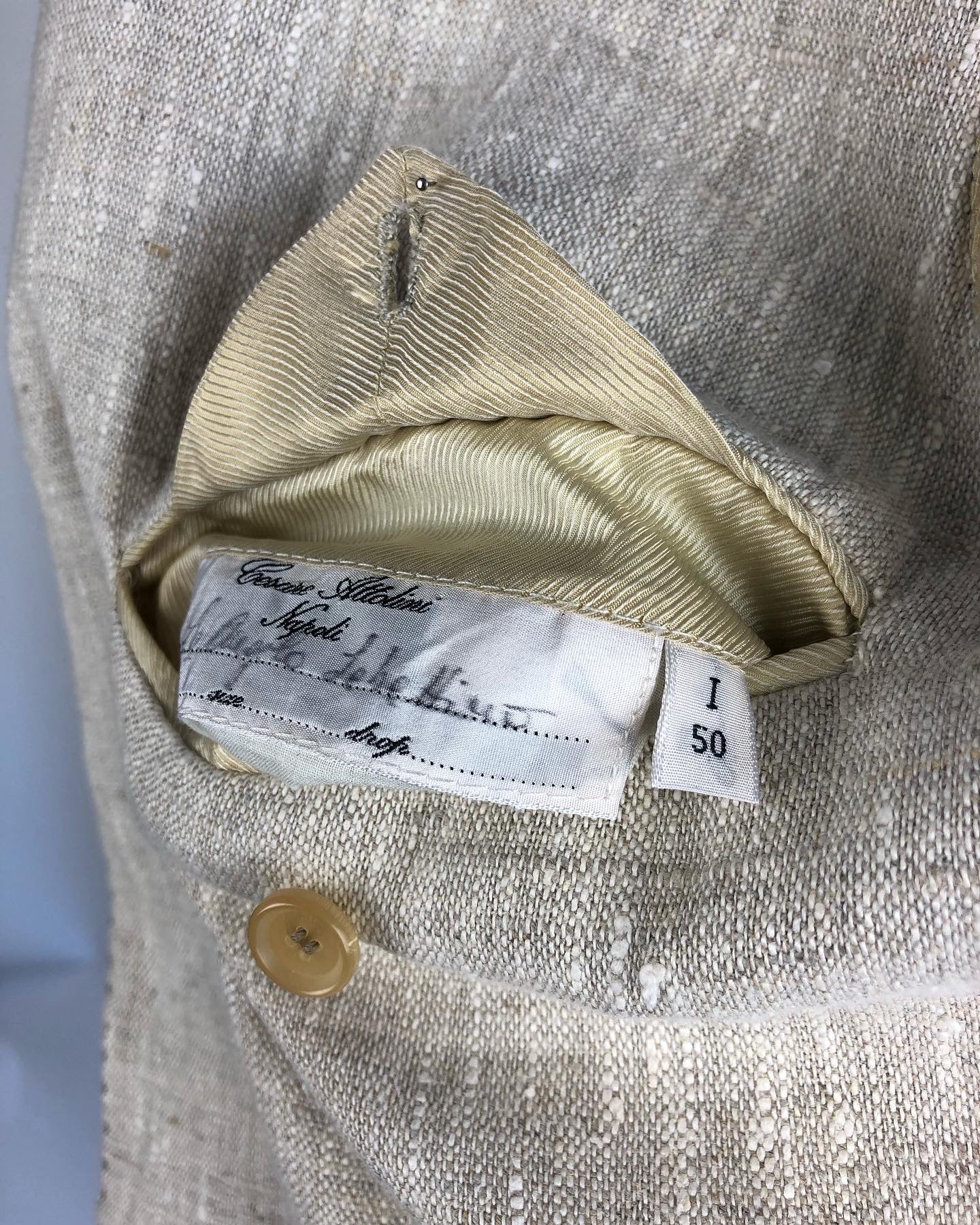
size
50 IT / 40 US / Large


 Curator's Description
Curator's Description Materials
Materials